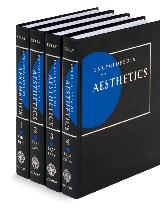Moore, Ronald. “Ugliness,” in Vol. 4 Encyclopedia of Aesthetics, edited by Michael Kelly, 417-421. New York: Oxford University Press, 1998.
The common conception that ugliness is simply the antonym of beauty, its polar opposite on the spectrum of aesthetic value, can easily obscure the subject's inherent subtlety and complexity—features that have made it both fascinating and perplexing to aesthetic theorists throughout the ages. Although there is no doubt an opposition between beauty and ugliness, it is an opposition that can be understood in a good many ways; and although beauty marks an extreme of aesthetic positivity, ugliness sometimes present itself in manifestations whose effects are not altogether negative. Philosophical reflection on the nature of aesthetic ugliness has centered on three issues: (1) the conceptual problem of providing a correct analysis of ugliness, particularly in its relation to beauty; (2) the ontological problem of determining whether ugliness exists (i.e., whether there are any things that truly are ugly) and, if it does, how it becomes engaged in aesthetic judgment; and (3) the critical problem of accounting for ugliness's salubrious effects both within and without the world of art.
